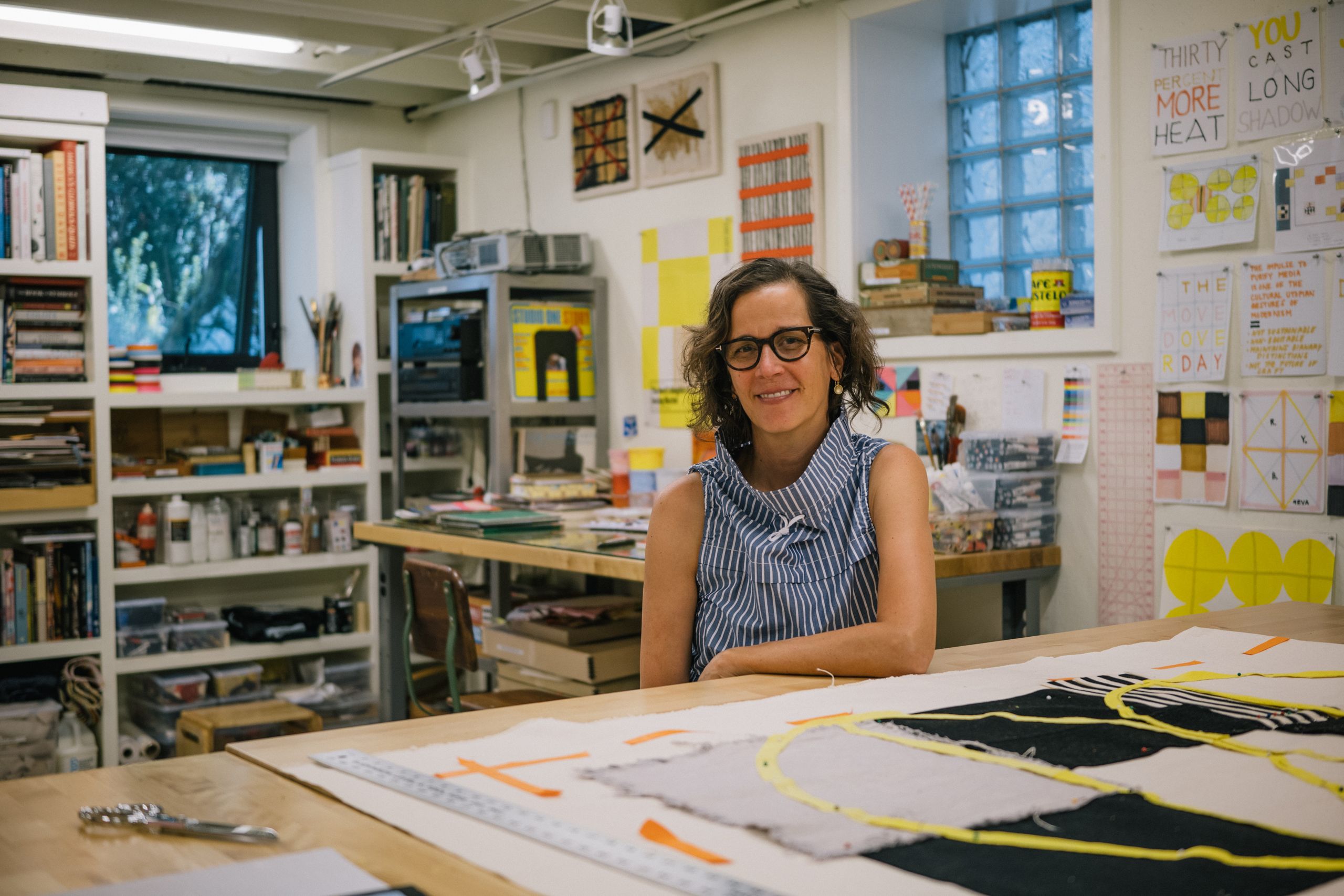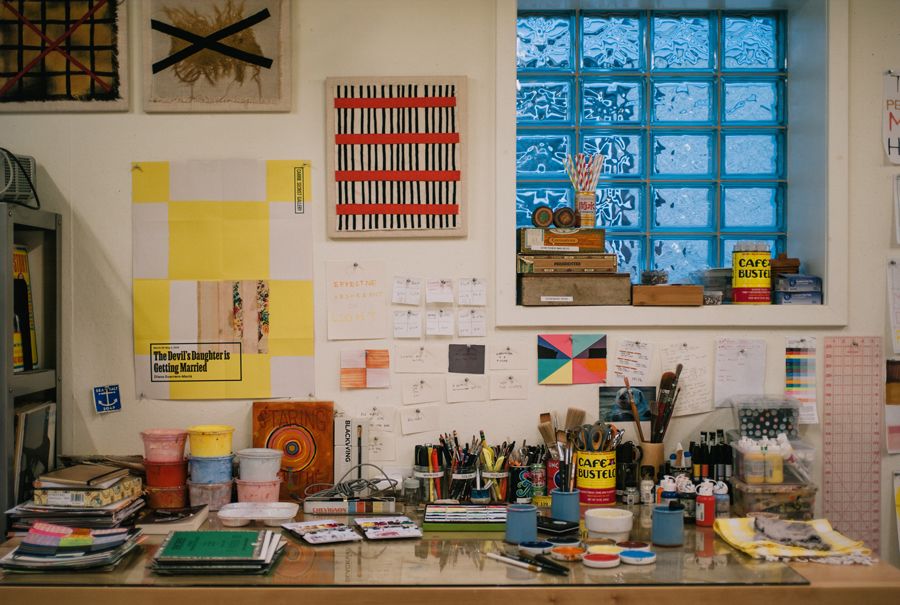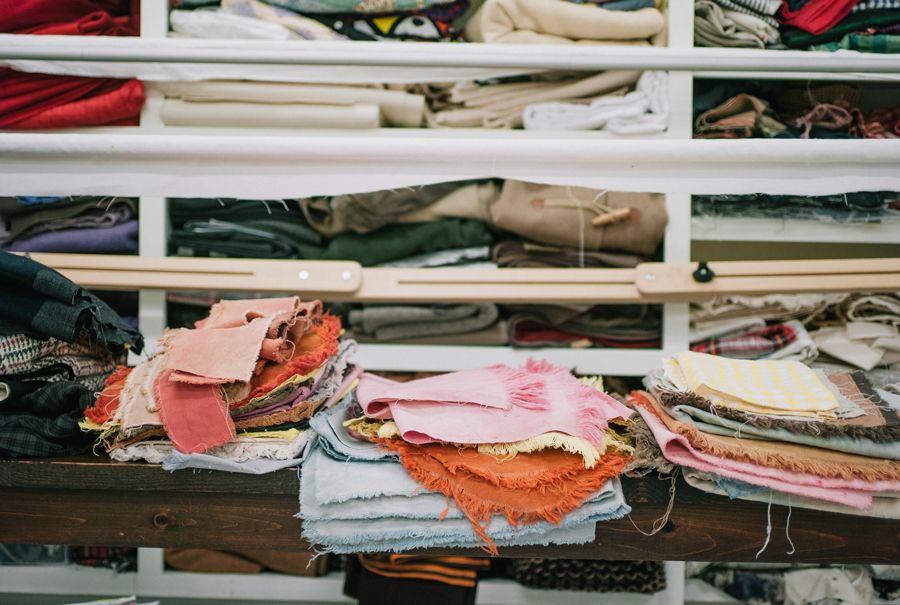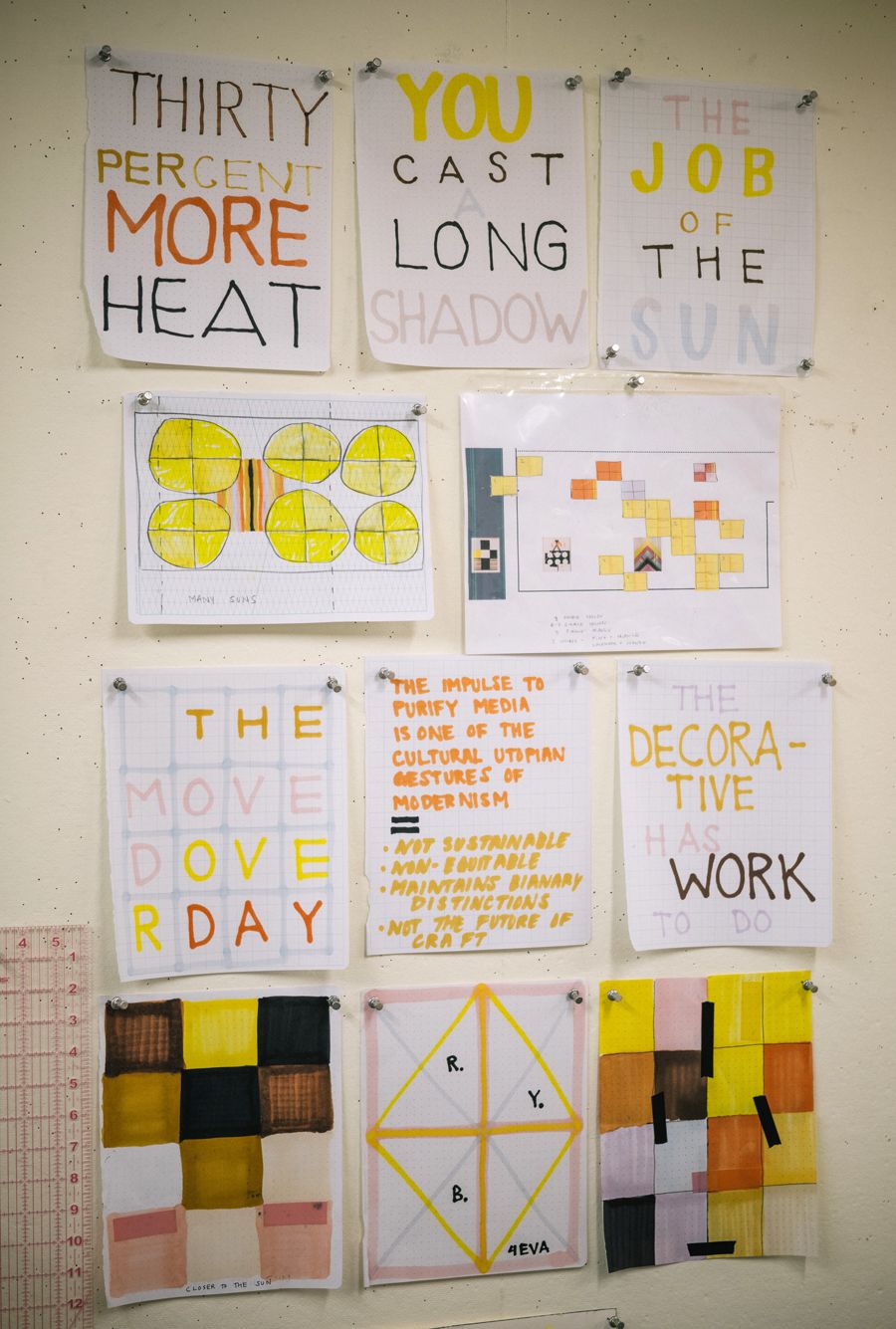Diana Guerrero-Maciá’s Home Studio

by Rowan Beaird
Photos by Greg Stephen Reigh (BFA 2013)
Professor Diana Guerrero-Maciá’s house rests on a quiet, tree-lined street in Chicago’s Logan Square neighborhood.
She bought it with her partner nearly 15 years ago, and they’ve been renovating it ever since: a new roof, new windows, and in their basement, a new bright, custom-designed studio space for her painting and textile practice.

Guerrero-Maciá's desk at her home studio
Guerrero-Maciá's desk at her home studio
Sustainability is essential to Guerrero-Maciá’s artistic ethos, which is immediately apparent in the compact, well-utilized space that was designed with the help of fellow School of the Art Institute of Chicago faculty member Odile Compagnon. “It’s a way of thinking as an artist,” Guerrero-Maciá shared. “There are elegant designs for complex problems, and they can be very simple solutions. Do more with less. It’s also an ethos of how I operate as an artist. I want to make the simplest things that contain the most.”
Guerrero-Maciá began her career as a painter, studying at both Cranbrook Academy and the Skowhegan School of Painting and Sculpture. It was during her master of fine arts degree that she began to experiment with textiles. “Making sketches with textiles pinned together to paint from the rendering of folds in textiles to show mastery [in painting] has a classical inheritance … I had a moment where I just thought, Let me make a painting without paint, just the textiles themselves, they are filled with much more content.”

A selection from Guerrero-Maciá's collection of textiles
A selection from Guerrero-Maciá's collection of textiles
This belief in interdisciplinarity is evident in her studio space. On the walls there are drawings, watercolors, and collages. Poetic phrases that are inspiring her are tacked next to her desk. “I’m a form finder through shape and color. I never know what something’s going to look like until I’ve finished it.”
This fluidity is helped by having a home studio, though as a working parent, this doesn’t come without its challenges. “There’s daily negotiation, but … It does let me do more over a broken-up period of time. Some of my most productive moments are [at] six in the morning with a cup of coffee before I have to bring a kid to school or get to work. I can have really productive moments then, and then I can drop into the studio in the afternoon or late at night.” This is part of the reason she and her partner decided to create a studio in their home—so she could be present as a parent and have flexibility and access as an artist.

Inspiring texts pinned to the wall of Guerrero-Maciá's studio
Inspiring texts pinned to the wall of Guerrero-Maciá's studio
In the months to come, there will be no shortage of projects to complete in this space. This past year, Guerrero-Maciá received a John Simon Guggenheim Memorial Foundation Fellowship for a series based on her interests in post-painterly abstraction and the grid. The walls are already papered with its beginnings, though—as with everything she does—Guerrero-Maciá knows it will continue to evolve and change, and that there’s no place better for this to happen than her studio. “It’s a great place to ideate and think things through.” ■

